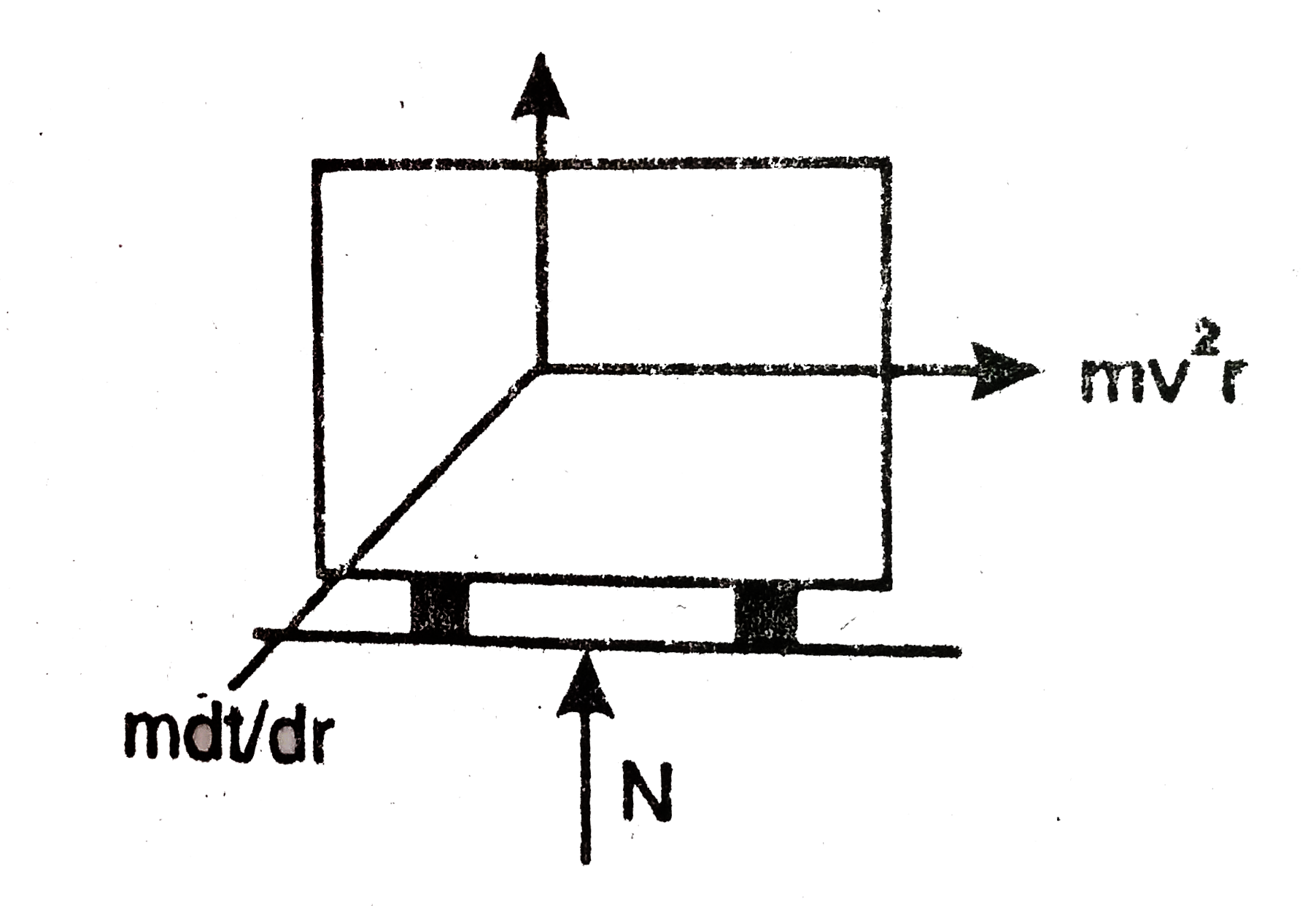A car starts rest, on a horizontal circular road of radius R, the tangential acceleration of the car is a. The friction coefficient between the road and the tyre is μ Find the speed at which car will skid and also find the distance after travelling it skids.
The correct Answer is:A, B, D
Since the motion is non uniform, the acceleration has both radial and tangential components.
a=v2r
at=dvdt=a
Resultnt magnitude = √(v2r)2+a2
Now,mN=m√(v2r)2+a2
→μmg=m√(v2r)2+a2
→μ2g2=v4r2+a2

→v4r2=(μ2g2−a2)
→v4=(μ2g2−a2)r2
→v=[(m2g2−a2)r2])14)
Topper's Solved these Questions
- CIRCULAR MOTIONBOOK - HC VERMA ENGLISHCHAPTER - CIRCULAR MOTIONEXERCISE - Question for short Answer
10 Videos
- CIRCULAR MOTIONBOOK - HC VERMA ENGLISHCHAPTER - CIRCULAR MOTIONEXERCISE - Objective -2
6 Videos
- CENTRE OF MASS, LINEAR MOMENTUM, COLLISIONBOOK - HC VERMA ENGLISHCHAPTER - CENTRE OF MASS, LINEAR MOMENTUM, COLLISIONEXERCISE - Objective -2
11 Videos
- FLUID MECHANICSBOOK - HC VERMA ENGLISHCHAPTER - FLUID MECHANICSEXERCISE - All Questions
90 Videos
Similar Questions
A car goes on a horizontal circular road of radius R. The speed of car is increasing at constant rate a m/s2. If the friction coefficient between the road and the tyre is μ, then the limiting speed of car is
View SolutionA car starts from rest on a horizontal circular road of radius 190 m and gains speed at a uniform rate 1.2m/s2 . The coefficient of static friction between the road and the tyres is 0.37 . Calculate the distance travelled by the car before it begins to skid.
View SolutionA car starts moving from rest on a horizontal circular road of radius of curvature R at . The speed of the car is increasing at a constant rate a. The coefficient of friction between the road and the tyres of the car is The car starts slipping at timet=t0 . Then t0 is equal to:
View SolutionA car moves along a horizontal circular road of radius r with velocity u -The coefficient of friction between the wheels and the road is μ. Which of the following statement is not true?
View SolutionA car is moving on a horizontal circular road of radius 0.1 km with constant speed. If coefficient of friction between tyres of car and road is 0.4, then speed of car may be (g=10m/s2)
View SolutionA car is negotiating a curved road of radius R. The road is banked at angle θ. The coefficeint of friction between the tyres of the car and the road is μs. The maximum safe velocity on this road is
View SolutionA circular road of radius r is banked for a speed v=40 km/hr. A car of mass m attempts to go on the circular road. The firctioncoefficient between the tyre and the road is negligible.
View SolutionA car has to move on a level turn of radius 45 m. If the coefficient of static friction between the tyre and the road is μs=2.0, find the maximum speed the car can take without skidding.
View SolutionA motorcycle is travelling on a curved track of radius 500 m. If the coefficient of friction between road and tyres is 0.5, the speed avoiding skidding will be
View SolutionA car is moving on a horizontal circular track of radius 0.2 km with a constant speed. If coefficient of friction between tyres of car and road is 0.45, then maximum speed of car may be [Take g=10m/s2]
View Solution
